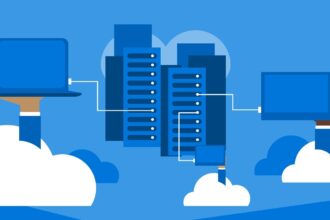Some cloud experts are proclaiming private clouds “are false clouds”, or that the term was conveniently conjured to support vendor solutions.
Some cloud experts are proclaiming private clouds “are false clouds”, or that the term was conveniently conjured to support vendor solutions. There are other analysts willing to hedge their bets by proclaiming that private clouds are a good solution for the next 3-5 years until public clouds mature. I don’t believe it. Private clouds are here to stay (especially for data warehousing)—let me tell you why.
For starters, let’s define public vs. private cloud computing. NIST and others do a pretty good job of defining public clouds and their attributes. They are remote computing services that are typically elastic, scalable, use internet technologies, self-service, metered by use and more. Private clouds, on the other hand are proprietary and typically behind the corporate firewall. And they frequently share most of the characteristics of public clouds.
However, there is one significant difference between the two cloud delivery models –public clouds are usually multi-tenant (i.e. shared with other entities/corporations/enterprises). Private clouds are typically dedicated to a single enterprise – i.e. not shared with other firms. I realize the above definitions are not accepted by all cloud experts, but they’re common enough to set a foundation for the rest of the discussion.
With the definition that private clouds equate to a dedicated environment for a single or common enterprise, it’s easy to see why they’ll stick around—especially for data warehousing workloads.
First, there’s the issue of security. No matter how “locked down” or secure a public cloud environment is said to be, there’s always going to be an issue of trust that will need to be overcome by contracts and/or SLAs (and possibly penalties for breaches). Enterprises will have to trust that their data is safe and secure—especially if they plan on putting their most sensitive data (e.g. HR, financial, portfolio positions, healthcare and more) in the public cloud.
Second, there’s an issue of performance for analytics. Data warehousing requirements such as high availability, mixed workload management, near real-time data loads and complex query execution are not easily managed or deployed using public cloud computing models. By contrast, private clouds for data warehousing offer higher performance and predictable service levels expected by today’s business users. There are myriad other reasons why public clouds aren’t ideal for data warehousing workloads and analyst Mark Madsen does a great job of explaining them in this whitepaper.
Third, in the multi-tenant environment of public cloud computing, there is increasing complexity which will lead to more cloud breakdowns. In a public cloud environment there are lots of moving pieces and parts interacting with each other (not necessarily in a linear fashion) within any given timeframe. These environments can be complex and tightly coupled where failures in one area easily cascade to others. For data warehousing customers with high availability requirements public clouds have a long way to go. And the almost monthly “cloud breakdown” stories blasted throughout the internet aren’t helping their cause.
Finally, there’s the issue of control. Corporate IT shops are mostly accustomed to having control over their own IT environments. In terms of flexibly outsourcing some IT capabilities (which is what public cloud computing really is), IT is effectively giving up some/all control over their hardware and possibly software. When there are issues and/or failures, IT is relegated to opening up a trouble ticket and waiting for a third party provider to remedy the situation (usually within a predefined SLA). In times of harmony and moderation, this approach is all well and good. But when the inevitable hiccup or breakdown happens, it’s a helpless feeling to be at the mercy of another provider.
When embarking on a public cloud computing endeavor, a company or enterprise is effectively tying their fate to another provider for specific IT functions and/or processes. Key questions to consider are:
- How much performance do I need?
- What data do I trust in the cloud?
- How much control am I willing to give up?
- How much risk am I willing to accept?
- Do I trust this provider?
There are many reasons why moving workloads to the public cloud makes sense, and in fact your end-state will likely be a combination of public and private clouds. But you’ll only want to consider public cloud after you carefully think about the above questions.
And inevitably, once answers to these questions are known, you’ll also conclude private clouds are here to stay.







